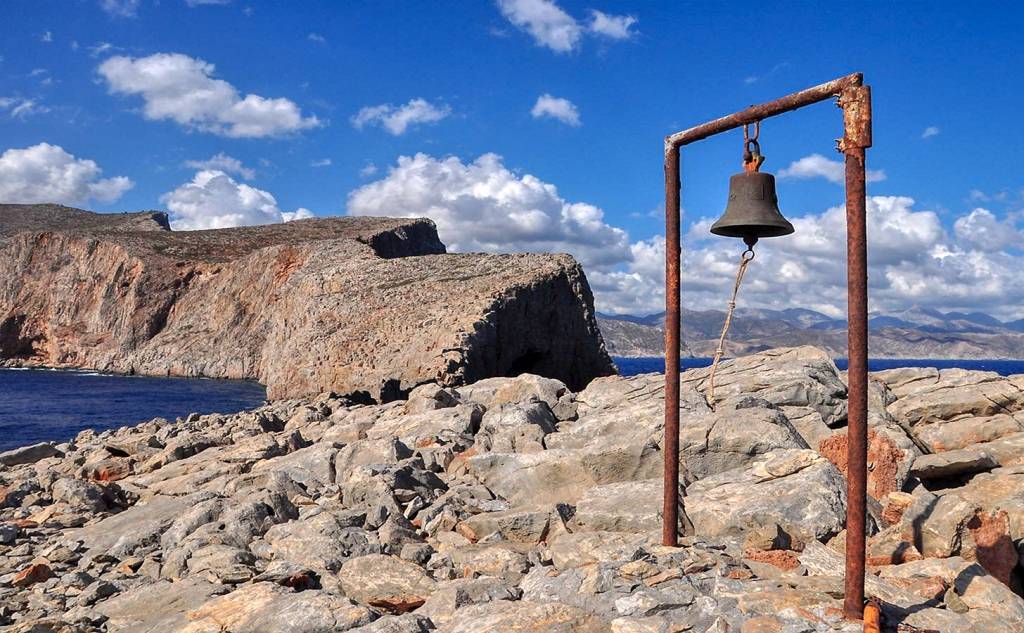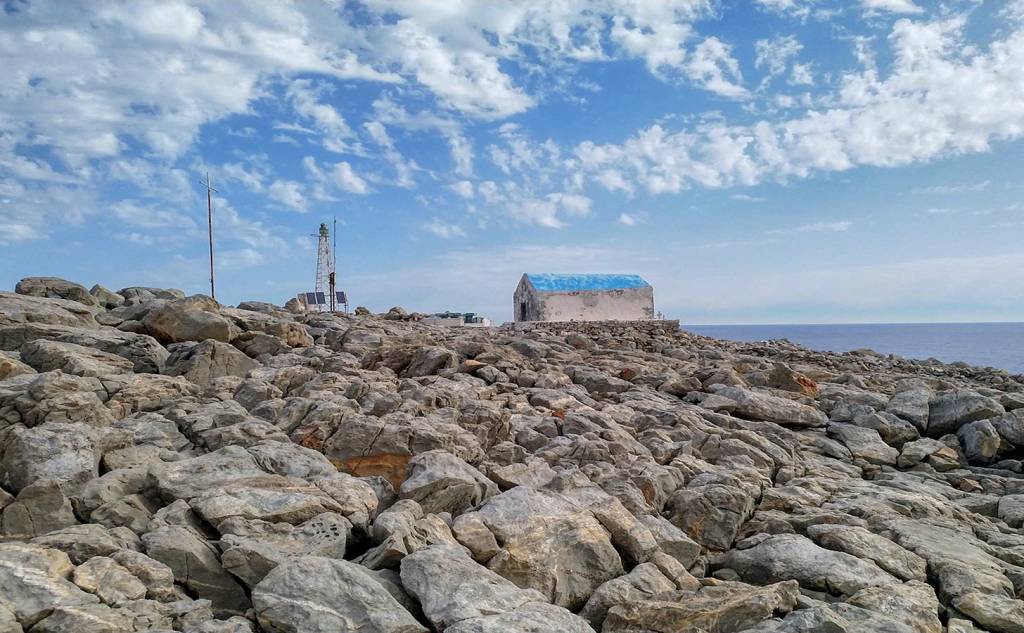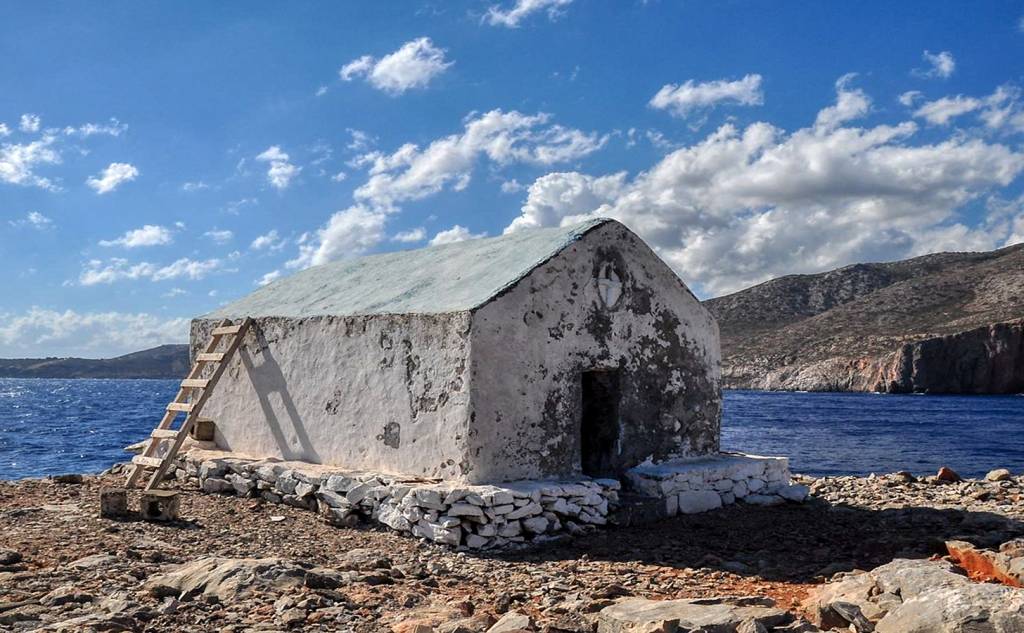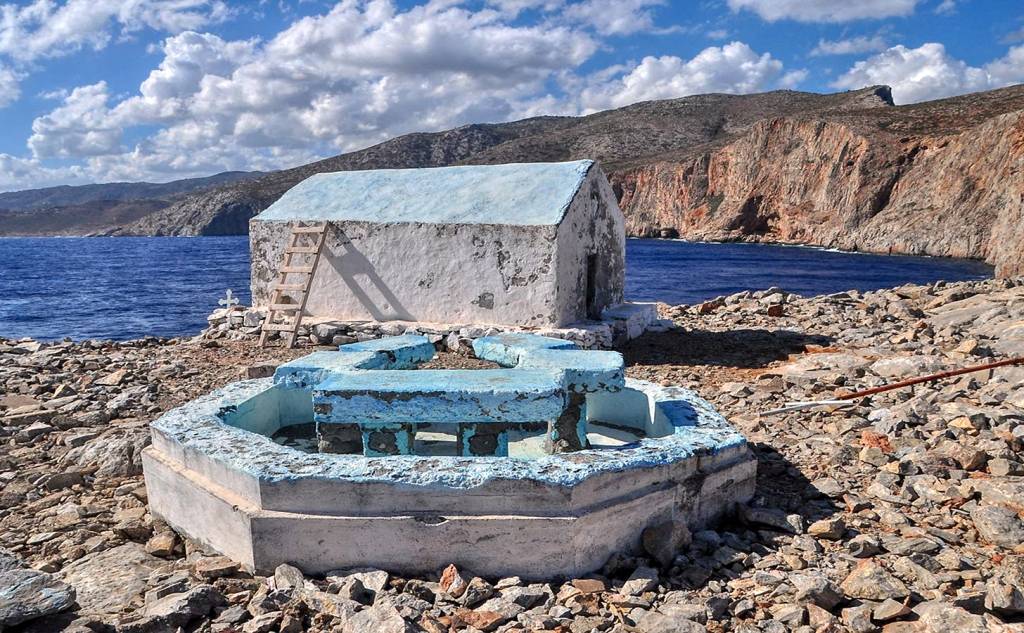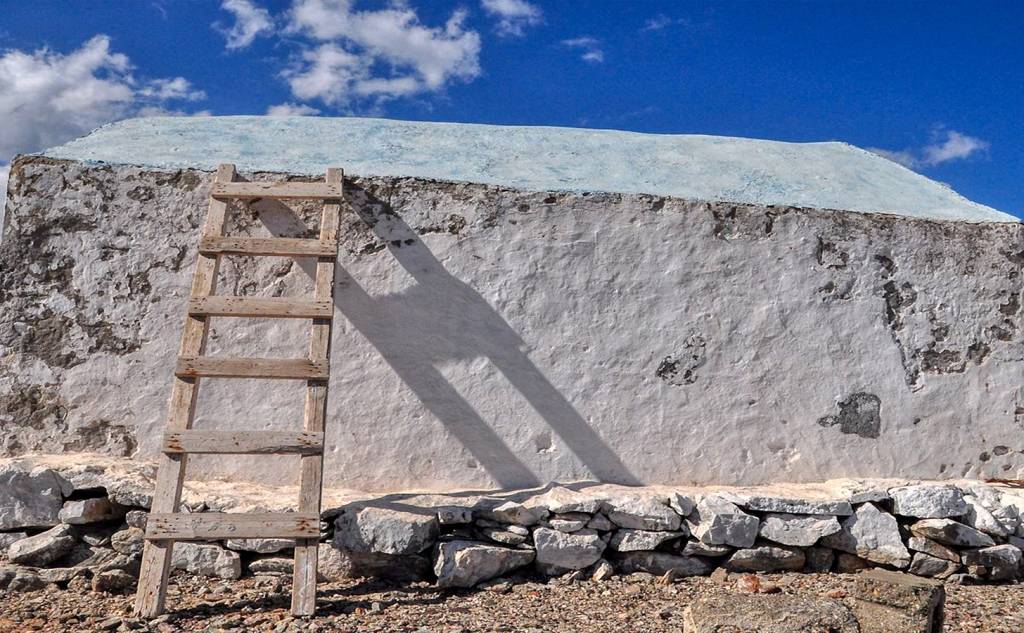Chapel of Agios Sozon
Saint Sozon’s cape at the northwest of Achlada, formerly noted in the maps of the times of the Venetian rule as the “Jeus’ End” and currently known today also Stavros [the Cross], has been a significant landmark since the ancient times.
Several legends and traditions are associated with Saint Sozon’s church which is found on the rocky cape. The best-known of them refers to a ship that was dragged close to the rocks by a harsh storm. The captain pleaded for the assistance of the Saint who was honoured on that day, and, in case he was rescued, he promised to build a temple with milk and honey. The ship was saved, and the captain, who attributed his survival to Saint Sozon, the Saint of the day, fulfiled his promise by erecting the little church at the tip of the sea above the sea-barren rocks. On the northern tip, the front side of the steep rock towards the sea is marked with three white crosses, visible from the passing boats even up to the present and drawn by the rescued captain according to the local tradition.
In the past, access to the temple had a more organised form. The faithful pilgrims from Heracleion and Aghia Pelagia could be transferred to the particularly hard-to-access area of the cape by small boats that used to provide regular routes.
Nonetheless, many people approach the area by different kinds of boats even nowadays. In contrast, a considerable number of them follow the presently faint traces of the rough path of the old pilgrims.
Next to the church is the old lighthouse, built in 1921 and operated on a systematic basis until 1949. Saint Sozon’s lighthouse was built at the same time as the Lighthouse of cape Lithino and with that of Koufonisi as a result of the new needs for the installation of lighthouses that were created during the military campaign at Asia Minor in order to assist the shipping missions to the islands of the Aegean Sea and the of Asia Minor coasts.



